BY LINCOLN ANDERSON | Father Patrick Moloney is not your typical Irish priest.
For starters, he’s a Melkite, a member of an ancient Eastern Catholic Church with roots in early Christianity in the Middle East.
He spent decades working with tough Lower East Side gang members, opening his doors to them, giving them a bed at his youth shelter, the Bonitas House, connecting them with constructive activities, like dances, as an alternative to the streets.
And then, well, there’s that other noteworthy chapter… . Father Pat served four years in prison in connection with the $7.4 million heist of a Brinks depot in Rochester, N.Y., in 1993. It was the fifth-largest robbery in U.S. history. And it was never fully solved — $5 million of the loot was never found.
To this day, Moloney, 88, professes his innocence.
But he’ll gladly talk to you at length about the infamous heist, describing all its players and details, its twists and turns — all the while explaining how he could not have been involved.
MTV/Netflix documentary
He did just that on a recent Sunday when the The Village Sun dropped by Bonitas House on E. Ninth St., near Avenue B. The reporter was following up on a tip from a reliable source that Moloney was going to be the subject of an upcoming documentary, involving MTV and Netflix.
Would the East Village cleric at last publicly confess in the doc that he was involved the Brinks heist, the tipster wondered? If so, at least he didn’t do it with The Village Sun.
“I never heard heard of it until they arrested me on Nov. 11 of the same year,” the priest declared of the infamous Upstate robbery.
As it turned out, though, Moloney had actually just gone cold on the film and now it was in limbo, and maybe no longer happening. As the priest told it, a year and a half earlier, a local filmmaker, Sebastian, “from around the corner,” had approached him and done several interviews. At that point, it was only being done as a project for New York University.
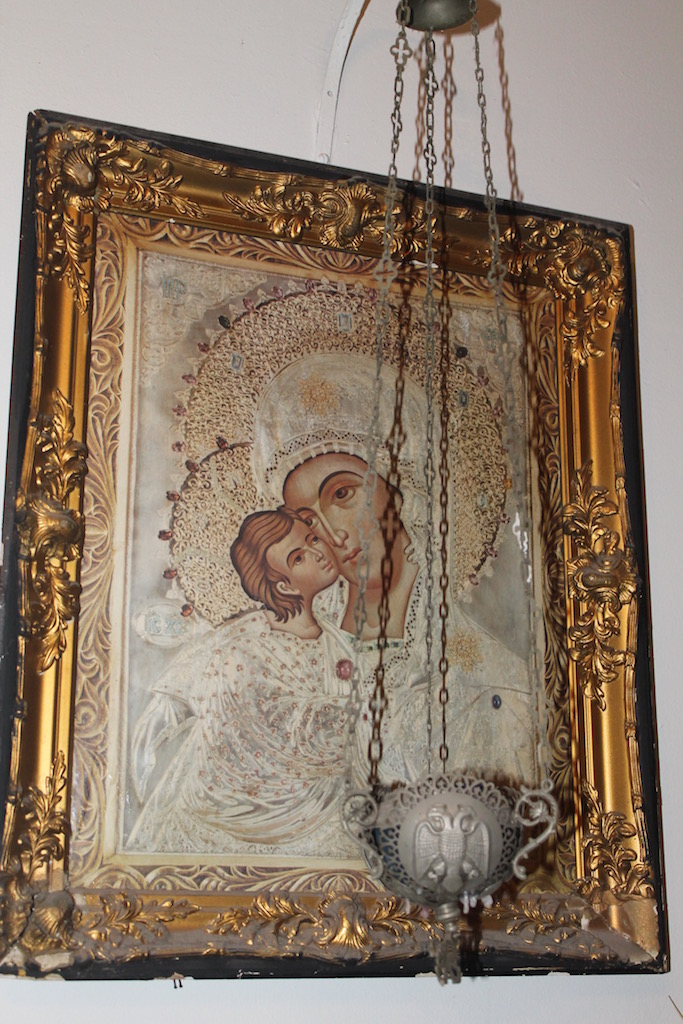
They had talked about everything, including Moloney’s work with local gangs starting in the 1950s and ’60s, of which he is very proud. But then, as Moloney related, the big media companies came into the project and the focus shifted — and narrowed.
“Three months ago, Sebastian came back and said MTV/Netflix wants to get involved,” Moloney said. “He brought me a contract. The print was very small.”
Deal-breakers
Father Pat noted he has macular degeneration, so it was hard to read. Beyond that, the document was simply too voluminous. The documentary was billed as a four-hour series — four one-hour segments — on the priest’s life and work. But there was also mention in the contract of spinning it off into a cable TV series. The real deal-breaker, though, for Moloney was the title.
“The name was going to be ‘The Holy Heist,'” he said.
“I have no problem with the Brinks being part of my life,” the priest said. “But when I was [initially] approached, it was my life story and the Brinks would not be the defining thing.
“Sebastian said they need something to get it off the ground,” he said. “The Brinks was sensational, but it had nothing to do with me. I was dragged into the milieu. They may need some dramatic thing, but it was supposed to be my life story.
“There began to be too much interest in the Brinks,” he said. Though, he added, “To be honest, I would like the story to get out. I wouldn’t mind clarifying about the Brinks.
“They did agree to change the title,” he said.
Yet, as of two weeks ago the project stood on shaky footing.
“I’m listening to my lawyers,” he said then.
One of his lawyers disapproved that Father Pat was not going to be paid a dime from the project.
“I was getting nothing,” the priest said. “That was written into the contract — my lawyer said no.
“I have implicit trust in Sebastian,” Moloney stated. “I believe he’s totally honest, totally sincere. I’m still willing to proceed. Right now, it’s on hold.”
He had not heard back from the filmmaker after their meeting three months earlier.
Father Pat said he actually didn’t know Sebastian’s full name.
“I don’t know — a Polish name,” he said.
‘Do I really need publicity?’
Asked if he felt any remorse about the project seemingly sputtering out, Moloney shrugged, “I don’t give a damn. … Do I really need publicity? Hell no! I’m 88.”
Father Pat, who is impressively spry for his age, zipped over and got a big heavy black binder full of newspaper clips about him. He brought it over and dropped it on the table with a bang. He flipped through the plastic-sheathed pages, full of blaring tabloid headlines, like “Double-Barreled Priest.” The best article, in his opinion, was a cover story in the now-defunct New York Press because, he said, “the writer knew me from the streets.”
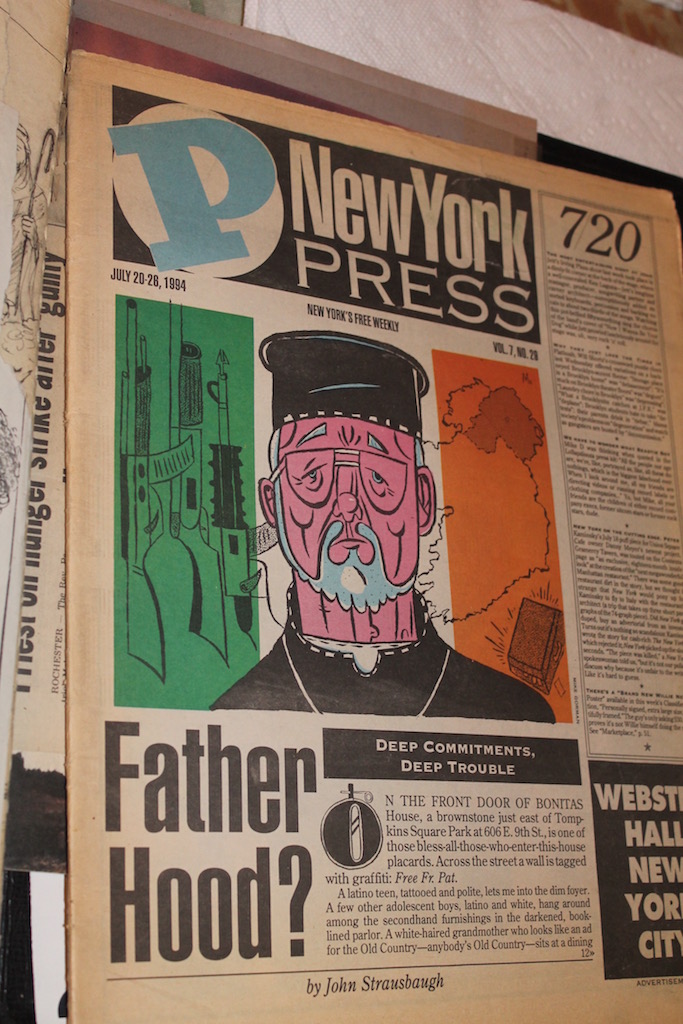
Brandishing a hard-cover copy of “Catholics Courageous,” Moloney also noted he is among the figures profiled in the 1964 book.
This would not be the first film about Father Pat, either.
“There have been several documentaries about me in the past,” he said, “several, dozens. They’re all over the place. I’ve been the most published priest in the country,” he added of his coverage in print media.
In addition, the documentary contract placed a lot of the liability — such as for copyright issues for use of those old newspaper clips — onto Father Pat, which he and his lawyers didn’t like either.
After the MTV/Netflix project stalled, two other major networks reached out to him about picking up the documentary, according to Father Pat. He didn’t want to name which ones, but said he was curious how they even found out about the project. Again, he said no.
“The media people told me I’d have my poster on a bus. I don’t need to see myself on the Avenue B bus,” he scoffed. “I’m an 80-year-old retiree. I don’t need it.”
Documentary may be back on
However, when The Village Sun checked back in and called Father Pat this Saturday, he said the documentary might now actually still happen.
“It’s back on track again now,” he said.
He said Gary Craig, a Rochester reporter who recently penned an authoritative book on the robbery — “Seven Million: A Cop, A Priest, a Soldier for the IRA, and the Still Unsolved Rochester Brink’s Heist” (2017) — had called him just the day before to say there’s now an effort to buy his book rights for the documentary.
“Apparently, they had gone to him to get the use of the book,” Moloney said. “So he’s going to talk to me during the week. Now they’re willing to accept any contract from me.”
Importantly, Father Pat would no longer have liability for certain things in the documentary, the way he would have under the previous contract.
He respects Craig’s work, noting the reporter covered the Brinks trial in person and pored over the court documents.
Clearly, a Father Pat documentary is a hot property right now. And the coup would be if it breaks new information about the case.
“I’m the subject of the thing,” Moloney said. “They’re trying to make me the kingpin, and I’m not. They’re seeing what they can look into, a new slant. They’re hoping I’m key to where did the rest of the stuff go — of the $7 million.”
Gunrunner brother
Before the Brinks heist, Moloney almost went to jail on another occasion. His brother John was an international shipper who was also running guns to the I.R.A. John would buy things like toys and quilts in the U.S., then sell them at a profit in Ireland.
“Perhaps over the years he was shipping more than toys,” Father Pat offered.
When one of John’s ships docked in Ireland in 1982, he and Father Pat were walking over to meet it. Although law enforcement had removed other weapons from the ship in America, they intentionally left one box of ArmaLite machine guns onboard, so that they could also build a criminal case in Ireland, as well.
ArmaLites are “like an Uzi,” Father Pat explained, matter of factly. “Favorite weapon of the I.R.A. — compact, deadly and quick.”
There might also have been some SAMS (surface-to-air missiles) in there, too, as Moloney recalled.
“That would be to take out the British helicopters that were taking the Irish boys and throwing them off,” he noted.
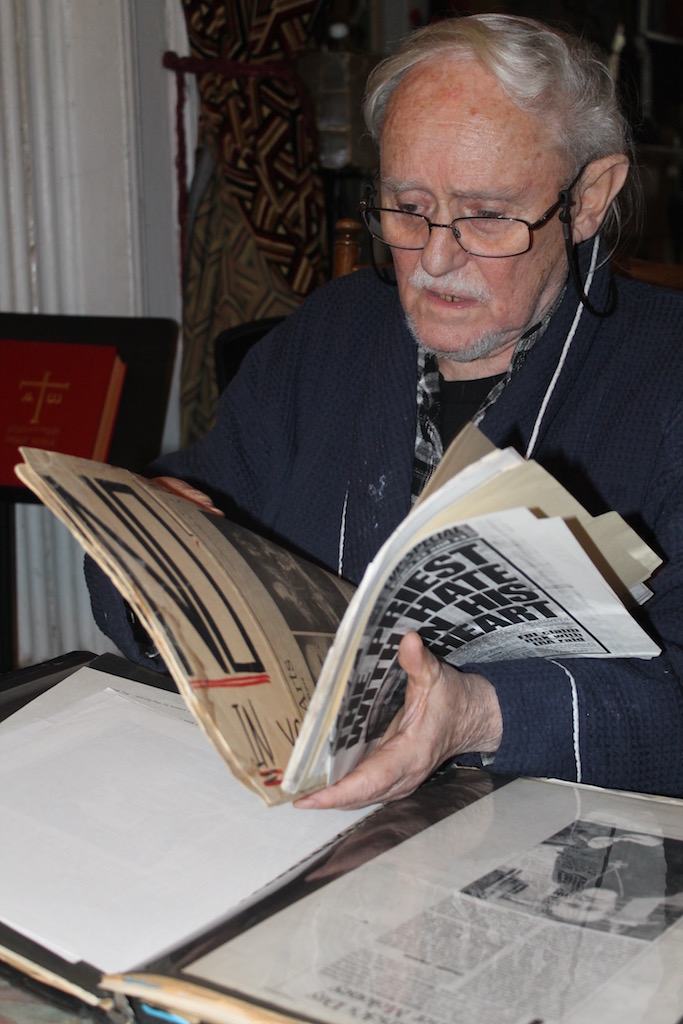
As Father Pat recounted, anger simmering in his voice, British soldiers would grab Irish boys, throw a hood over them, take them up in the ’copters and grill them about their older brothers’ presumed activities in the I.R.A. When the aircraft were still a few feet above the ground, the soldiers would shove the still-hooded youths out of the choppers, making them think they had been hurled to their death.
As for the gunrunning bust, Moloney got off. John served three years in prison. John later moved with his family into the building right next door to Father Pat’s — Bonitas House is the one with the big star and plants in front — before eventually moving to Queens.
Working with youth gangs
As the Troubles were starting in Ireland, Moloney was dealing with troubles on a smaller scale on the Lower East Side, in what’s since been redubbed the East Village. At first, he just had an apartment on E. Ninth St.
“I arrived here in 1956 and I never left except for a few sojourns that took me away,” he said.
“Drugs, gangs, fighting police corruption,” he said of his work in the community in those early days. “Most of the cops were decent guys. Bad cops, we would work to get rid of them. I worked to make good cops better.
“It was the Untouchables and the Assassin kids,” he recalled of two rival gangs around E. Ninth St. “The gangs had sweaters with gang logos. If you had to go through the other gang’s territory, you had to pay a nickel.”
He remembered the young gang members who would go on to found CHARAS and its community and cultural center in the abandoned old P.S. 64 across the street. They were involved in Moloney’s Bonitas House.
“Chino [Garcia] was part of the Baruch Men, I think,” he said. “Andre, Armando [Perez], they were all little boys here at 14. I photographed them.”
Bonitas House, which is also known as The House of Lazarus, is open 24/7.
“Our door will always be open,” he assured.
The place provides guidance, compassion and also meals, the latter which Moloney has always felt is a way to connect with youth. Over the years, his program depended on donated food, which reliably flowed in from many quarters.
Back in those early days, he also knew Dorothy Day, the co-founder of the Catholic Worker movement.
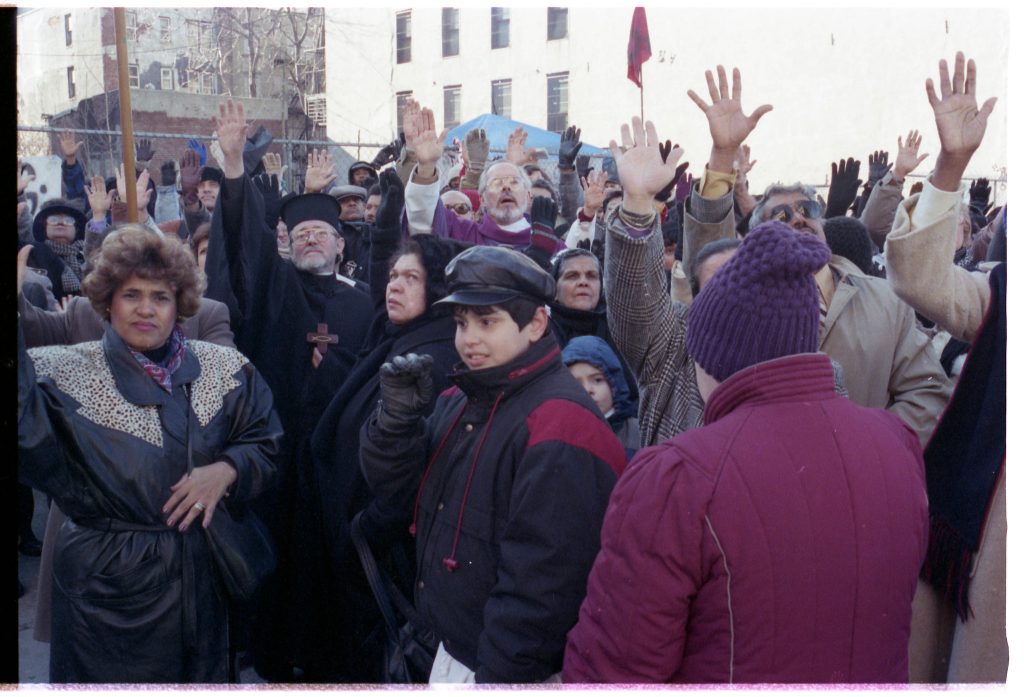
“Dorothy and I were close friends all down the years,” he said. “Dorothy said to me in 1961, ‘You’re about to be ordained a priest. Don’t. You’ll be dumped in a parish.'”
Through what he called social activities — “I used to go down to the Russian Cathedral,” he noted — he subsequently got involved with the Melkites, and 15 years later eventually did become a priest.
The Brinks heist
As for the Brinks heist, Moloney said he knew some of the individuals as young Irish men who were noncitizens trying to get amnesty.
Brinks security guard Tom O’Connor, the alleged inside connection, was acquitted since, as a former cop, he knew how to dodge the charges, according to Moloney.
Sam Millar — who the priest knew at the time as Campbell — was a former I.R.A. “blanket man.” Those were the inmates in “Long Kesh” prison, in Northern Ireland, who refused to wear prison uniforms. Millar did 13 years behind bars over two different stints. O’Connor smuggled him into America across the Canadian border. Moloney met Millar at a wake.
Ronnie Gibbons had been in on the planning of the heist but ultimately didn’t help carry it out. Several years afterward, though, he drove Upstate, possibly to try to get a cut of the cash, but wound up dead. His car was found in Greece, N.Y.
“A torso was found in Lake Erie…later on, limbs. … The head was never found,” Moloney recounted. “Ronnie was a good egg, colorful, hated the drug dealers.”
According to the priest, Millar and Gibbons both worked for “Big Mac,” who ran gambling both around the city and on offshore boats. They were croupiers, and Millar was also a bagman. He would remove the money from the gambling dens and spirit it away on a motorcycle, so that if the cops raided them, there would be less cash on hand, so the criminal charges would be lower.
Gibbons, who was a boxer, had a boutique in Greenwich Village on Sixth Ave. between 13th and 14th Sts. Millar was trying to open up a comic book shop in Queens.
Some accounts include another robber, Marco, but, in Moloney’s view, it’s doubtful if this man really existed.
$2 million Stuy Town stash
After the heist, the feds found more than $2 million stashed in a pad in Stuyvesant Town that Moloney was renting for use as what he called a “hospitality apartment.” Moloney was letting Millar’s brother, wife and child stay there on a visit from Ireland.
A fourth man, an unemployed teacher, Charles McCormick, who was also acquitted in the case, had leased the apartment to Moloney a few months before the feds found the money there.
The cash was all in $20 bills, which was what the Brinks cash was, since it was ATM money, which is hard to trace, Moloney noted. But reportedly more than $100,000 of what the feds found in the apartment had serial numbers linking it to the heist.
Father Pat told The Village Sun that, after first seeing the money in the apartment, he “figured it was for gambling.”
He readily admits to having bought a counting machine to tally the bills. Moloney was caught counting bills in a car near Stuy Town.
Back on E. Ninth St., the feds found $168,000 in a safe in Father Pat’s office. But it was in individual envelopes with people’s names on them and they weren’t all $20 bills, Moloney noted. Eventually, the feds returned some of the confiscated money to him, he said. If they had done so before his conviction, though, he claimed, he would have gotten two years less in jail since it would have dropped the charges to a lower level.
“I should have gotten out for good behavior,” he added.
Moloney wound up being convicted of stashing the stolen money and sentenced to 51 months in prison. Millar got 60 months, and was deported back to Northern Ireland.
The priest scoffed he was convicted by a jury “of little hickey people from the north of Elmira, N.Y., who couldn’t have been concerned of the kind of priest I was, working with the gangs.”
‘Money wasn’t for I.R.A.’
The robbery was purely for personal gain, as both Moloney and Millar tell it.
“I admire Sam, the freedom fighter, the blanket man, the patriot,” Moloney said. “I deplore Sam, the robber. It didn’t have to be. It brought a lot of negative attention to the Irish freedom cause.
“Sam had no good intention — just to enrich himself. The robbery was done strictly for a group for their own personal ends. It had nothing to do with Ireland.
“I know I didn’t get a nickel out of it,” Moloney shrugged. “It cost me four years of my life. It put me, as a Catholic priest, into the belly of the beast.
“They had me as an underground general,” he said. “They had me as a real I.R.A.
“They thought I was the pimpernel,” he added, bemusedly. He was referring to the fictional character the Scarlet Pimpernel from the 1905 adventure novel of the same name.
Moloney noted that no one had ever committed a robbery in America just to send money back to the I.R.A. — thus it’s totally implausible that the heist was done toward that end. On the other hand, he argued, his brother actually buying guns and shipping them to Ireland was completely different than that.
At any rate, today Millar is a crime fiction writer. He also wrote a book on the heist, called “On the Brinks.”
“Well, now, Sam has told the truth,” Moloney said. “His book exonerates me completely.”
Helping those in need
People reach out to Father Pat with issues all the time. Over the course of The Village Sun’s interview with him two weeks ago, he got several calls from local residents asking for his help.
“Christ is among us,” he said as he answered each call.
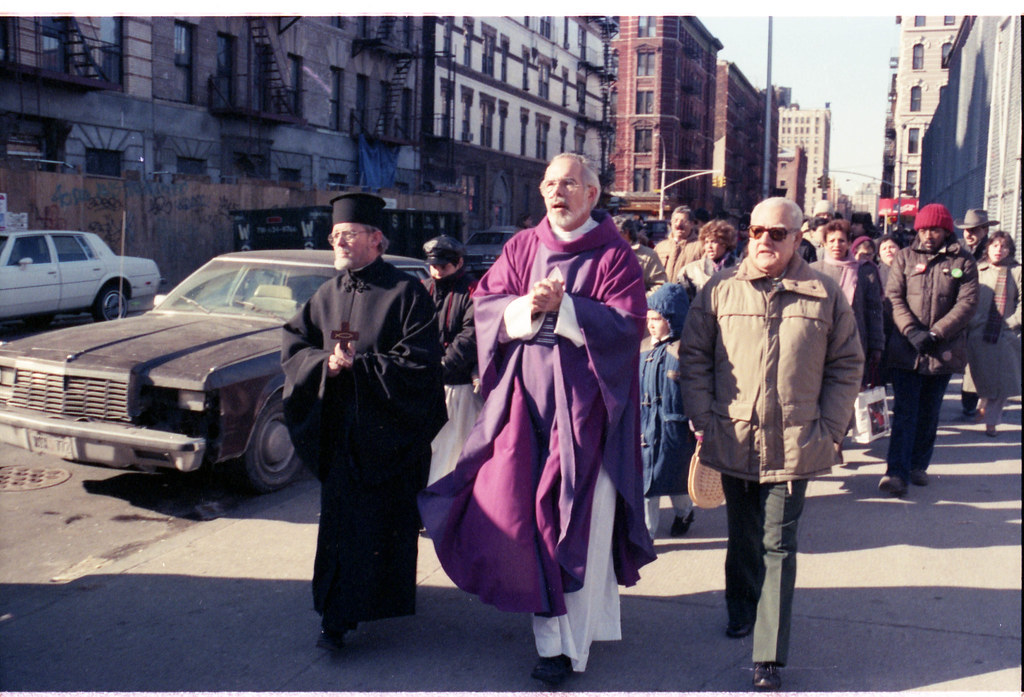
One woman wanted him to put a good word in for her son, who was in trouble with the law. After finishing the call, Moloney related that she had asked him to say her son had done community service with him. But it wasn’t true. So he wasn’t going to do it, he said, adding that sometimes people making similar requests had even tried to bribe him.
“As they say,” he stated, “the truth will set you free.”
Limerick and ‘Angela’s Ashes’
Speaking of the truth, Moloney supports the late Frank McCourt for having told it, in his view.
The priest is originally from Limerick, Ireland — “Limerick City,” as he put it — where he was a grade below the Pulitzer Prize-winning writer in school.
“A lot of Irish didn’t like the book,” he noted of “Angela’s Ashes.” “I told Frank, he didn’t go far enough.” Though, he added, “I would have left out the part about the mother.” He was referring to an affair Angela had with a cousin, Laman, that allowed the family to have a roof over their heads.
“I knew the lane they used to throw the slop out in,” Moloney said of where the McCourts lived in crushing poverty. “I knew every inch.”
Irish freedom supporter
As for Ireland today, Moloney has no doubt that the six counties of Northern Ireland will rejoin the fold of the 26. And it’s Brexit that will do it, he predicted — because of the devastating impact the pullout will have on Northern Ireland’s economy.
“I have always been an outspoken supporter — and still am — of the Irish freedom movement,” he said, proudly. “What the bombs couldn’t do, what the bullets and the ballots couldn’t do, the current situation could. It’ll kill the economy.
“I don’t refer to it as Northern Ireland,” he noted. “I refer to it as the Occupied Zone of Ireland.
“I’m positive, it’ll be soon,” he said of a united Ireland. “From coast to coast, from Kerry to Derry, Galway to Dublin.”
Every year, Father Pat goes to Gaelic Park in the Bronx on Easter Sunday morning and talks about the 1916 Irish uprising. He didn’t this year, though, since the event was canceled due to COVID.
“I am and will always be an outspoken advocate for freedom and justice for all nations, including my own,” he said. “I’d like to see freedom and justice for Palestine and Armenia.”
Mentioning the likes of militant Zionist Menachem Begin and Revolutionary War hero George Washington, he said, “I don’t believe they created criminal acts to begin with, because the fight for freedom isn’t criminal.”
And so now the documentary — in which, if it’s released, Moloney will reassert his own lack of criminality — is back in play. And it sounds like, if the contract is fair and the title acceptable, he’ll O.K. it gladly.
“I’m an open book. I have nothing to hide,” he said. “They say the truth will set you free.”
Father Pat packed a punch
Maybe the documentary makers will want to use some of the archival shots taken of Father Pat by former East Village photographer and activist John Penley.
Penley, who now lives in Las Vegas, tipped The Village Sun off about the film project after hearing about it from local activist Jimmy Simopoulos.
In a favorite Father Pat anecdote, Penley recalled one time during the height of the Tompkins Square Park riots period in 1988 when protesters fled inside St. Brigid’s Church, at Eighth St. and Avenue B to evade the police. An undercover cop tried to get inside, but Father Pat barred his way — and actually punched him.
“Father Pat hit him in the face and knocked him down,” Penley said. “He was protecting the people in the sanctuary. It was right in the middle of the Tompkins Square Park uprising.
“I saw him do it. I was one of the people who went in the church. Everyone was like, ‘Yeah, Father Pat!’ It happened so fast, I couldn’t get a photo of it.
“When they realized who Father Pat was, they dropped the charges.”
The neighborhood used to have plenty of offbeat characters like Father Pat, he recalled, but he said, “A lot of them have been priced out.”

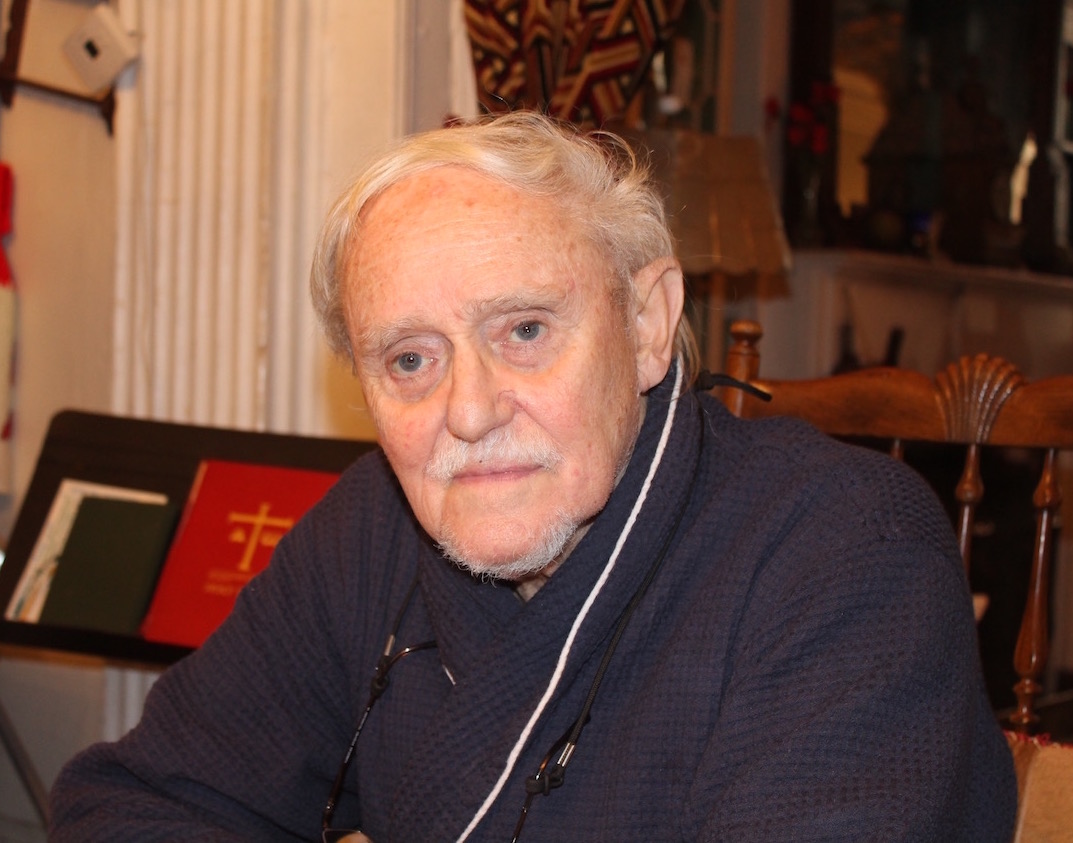
Just one of the thousands of people Father Pat helped…in the late ’60s and early ’70s, first for my clients, then me, personally. Unforgettable, Father Pat, Anna next door, and so many kids in the Bonitas House days. He stuck up for the most bedraggled and ignored people, before it was fashionable.
Hi My name is Cathal O’Donovan. I was the Solicitor who represented Father Pat and his brother John in Ireland in 1982. Glad to learn that Father Pat is still with us or was 6 months ago and sincerely hope he still is, likewise with John. I stayed with Pat on East Ninth St. for 2 weeks back in March 1983, that was a great trip. The last time I meet Pat and John was in 1986 when I was in New York. I brought them to Asti’s restaurant, is it still there? The late Prince the singer was there that night also. Do you have an e mail address for Father Pat and/or his brother John. I would love to get in touch with them just to say hello.
Sincerely
Cathal
Just read this article..FYI..John Maloney passed on yesterday June 3rd..May he RIP.
Lovely to think there might be a documentary. Being a relative of Father Pat I’d love to see this. My son and grandson ask about him and would of loved to meet him. He paid for my mum to come to New York with his sister and stay with him. She absolutely loved it. Sadly both are no longer with us.
I first got to know and document Father Patrick Maloney during the years of turbulence on the LES. My first encounter was during the 1988 Tompkins Square Park police riots. His voice is loud and clear and he is easy to spot. He and Father Kuhn of St. Brigid’s Church were trying to talk the police into leaving the area. Explaining the police were out of control.
Without question, Father Pat is one of the most interesting people I have hung out with on the LES. A great storyteller. He has lived a very rich and colorful life. He has helped many, many people, especially troubled boys. John Strausbaugh article is a good one.
I have documented different parts of the religious community on the LES. I have always had the highest opinion of Father Patrick Moloney. Since the 1950s he has been involved in saving boys from the evil side of LES life. No question we have argued different points. But Father Pat was always on the good side of the equation.
Thanks,
Clayton
Father Pat was and always will be a HERO to us all on the Lower East Side!!
Thanks for posting this article. Father Pat inspired me to avoid gang life when my two older brothers were members of the Assassins almost 60 years ago. I also enjoyed seeing the photograph of Father George Kuhn, who inspired me to community leadership in the 1980s.
When the FBI raided Father Pat’s building I got a call from someone who told me to get my camera and go over there. I did and some of those photos of the joint FBI-NYPD raid were published in the NY Daily News and other places. All this and many other Father Pat photos are in my Tamiment Library archive.
Hi John!
I would love to learn more about these photos. I sent you a message on facebook and would love to get in touch with you.